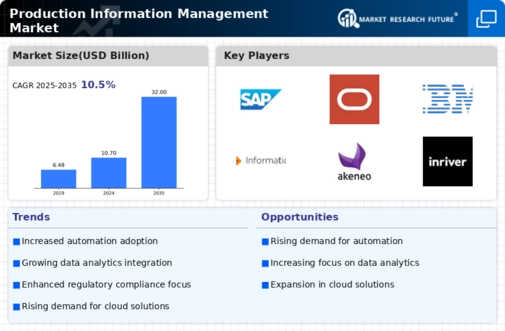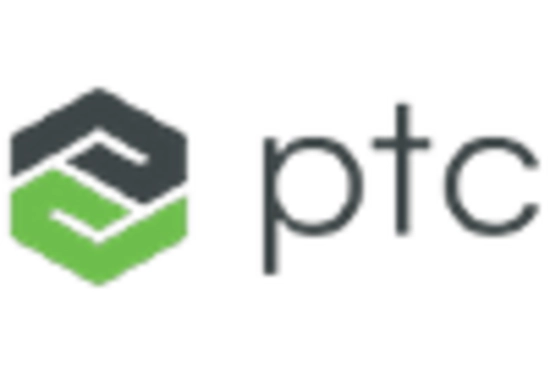Market Trends
Introduction
Looking ahead to 2023, several macro-economic factors will play a major role in the evolution of the Production Information Management (PIM) market. Artificial intelligence and machine learning will have a major influence on the way in which product data is managed, enabling more efficient processes and improved decision-making. Meanwhile, increased regulations in the areas of data protection and compliance are putting increasing pressure on companies to adopt more robust PIM solutions to ensure compliance with evolving standards. Furthermore, the need to meet consumers’ demands for a more individualized and omni-channel experience will continue to force companies to refine their product information strategies. These trends will have a major impact on the strategic direction of the PIM market. Not only will they enhance operational efficiency but also enhance customer engagement and satisfaction, thereby enhancing companies’ competitive edge in a rapidly evolving marketplace.
Top Trends
-
Increased Adoption of AI and Machine Learning
Artificial intelligence and machine learning are becoming a part of production information management, enabling data processing and insights to be generated automatically. In the case of IBM, for example, machine learning is used to improve data quality. A study shows that data errors were reduced by up to 30 percent. This trend will result in a simplification of the business process and a shift of focus to strategic initiatives. In the future, we may see more sophisticated data analytics. -
Focus on Data Governance and Compliance
Data governance is becoming a priority for many organizations. With data privacy regulations becoming more and more strict, data governance is becoming a priority. In fact, SAP has implemented extensive measures to comply with the General Data Protection Regulation (GDPR) and the Californian Personal Data Protection Act (CCPA). Research shows that more than 70 percent of companies are improving their data governance to minimize risks. This trend will probably lead to more investments in compliance technology and training. -
Integration of IoT in Data Management
The Internet of Things (IoT) is revolutionizing the data collection and management of production environments. Oracle has developed a system to collect and analyse data from machines and processes in real time. This has led to an average improvement in operational efficiency of 25 per cent. This trend will lead to more and more systems, enabling real-time decision-making. -
Emphasis on Customer-Centric Data Strategies
To improve the customer experience, businesses are focusing on customer-centric data strategies. Product information management (PIM) is a good example of this. Akeneo’s PIM solution highlights the importance of personal data. According to research, 80% of consumers prefer a personalised experience. This trend will no doubt encourage businesses to invest in advanced data analytics tools to understand consumers’ preferences better. -
Cloud-Based Solutions Gaining Traction
Cloud-based solutions for Production Information Management are gaining in popularity. Cloud-based PIM systems are scalably and cost-effectively designed. According to Informatica, 60 percent of companies are moving their data management to the cloud. This trend will also drive innovation in cloud technology and make data management more flexible and cooperative. -
Rise of Collaborative Data Ecosystems
The new data economy is a data-sharing economy, where organizations seek to exchange data across platforms to increase their insights. Companies like Riversand facilitate these data-sharing relationships among all the participants. It is estimated that collaboration increases data quality by up to 65 per cent. This may eventually lead to the establishment of common data standards across industries. -
Enhanced Focus on Data Quality Management
Management of data quality is becoming a critical issue for companies as they recognize its impact on decision-making. Stibo Systems emphasizes the importance of clean data and states that poor data quality costs companies on average $ 15,000 per year. This is likely to lead to an increase in the use of data cleaning technology and processes. -
Adoption of Advanced Analytics Tools
In a large number of data, we use advanced analytic tools to derive useful information. A company such as Winshuttle provides solutions that enable real-time analysis, resulting in a 40% increase in the speed of decision-making. This trend will lead to a data-driven culture in companies and improve overall business agility. -
Sustainability and Ethical Data Practices
Among the main criteria for evaluating the data management practices is the question of their sustainability. Companies are increasingly adopting ethical data practices, which are aligned with the principles of CSR. For example, Contentserv has embraced the sustainable use of data, and consumers are willing to pay more for ethically sourced products. This trend may lead to the development of new frameworks for sustainable data management. -
Growth of Multi-Channel Data Integration
Multi-channel data integration is essential to a unified view of the customer. A recent study shows that integrated data can increase customer satisfaction by 20 percent. The trend towards integration is expected to lead to the development of more sophisticated tools and strategies.
Conclusion: Navigating the Competitive Landscape Ahead
The PIM market in 2023 is characterized by a highly competitive environment and significant fragmentation, with the major players competing for market share. The geographical trends indicate an increasing emphasis on localized solutions, as vendors adapt to the local market requirements and regulatory frameworks. The established vendors are relying on their reputations and the resources at their disposal to further enhance their offerings, while the new entrants are focusing on differentiating themselves with their focus on innovations such as automation, machine learning and sustainable development. As the market develops, the ability to offer flexible and scalable solutions will be critical for success. Vendors must therefore ensure that they continue to invest in these capabilities, to ensure that they can continue to compete and meet the increasing demands of their diverse customer base.

















Leave a Comment